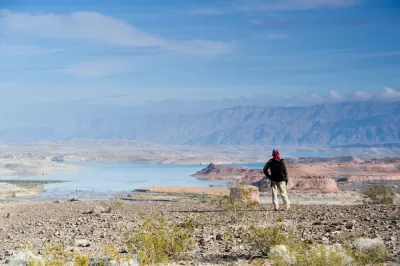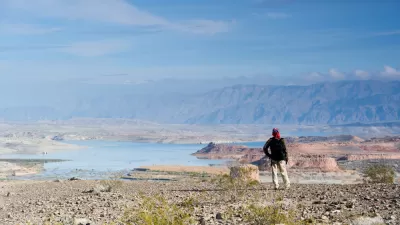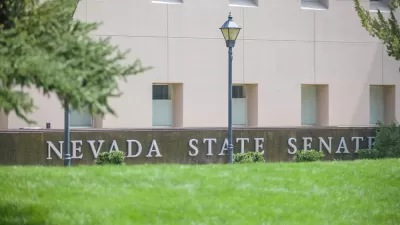California, Arizona, and Nevada are hammering out a plan to address the worsening drought along the Colorado River.

Ian James reports for the Los Angeles Times about a new effort underway in the U.S. Southwest to account for declining water flows and storage capacity on the Colorado River as the region continues to grapple with a once-in-a-millennium megadrought:
Two and a half years after signing a deal aimed at averting a damaging crisis along the Colorado River, water officials from California, Arizona and Nevada are discussing plans to take even less water from the shrinking river and leave it in Lake Mead in an effort to prevent the reservoir from falling to dangerously low levels.
James refers to the 2019 Colorado River Drought Contingency Plan Authorization Act, known commonly as the Drought Contingency Plan or DCP. The DCP was behind the first-ever supply reductions of Colorado River water for Arizona in January 2021. Upper Colorado River Basin states—Colorado, New Mexico, Utah, and Wyoming—followed in May 2021.
As for the new deal for California, Arizona and Nevada, James reports these salient details:
Representatives of water agencies from the three states said they are firming up the details of a deal that would leave an additional 500,000 acre-feet of water in the reservoir next year, and the same amount again in 2023 — about double the quantity of water used annually by Las Vegas and the rest of southern Nevada.
The ongoing drought along the Colorado River has left water levels on Lake Mead at record low-levels since the summer. If the three states can agree on the deal, dubbed the 500+ Plan, California would agree to water reductions prior to Lake Mead reaching levels that would trigger the DCP. The 500+ Plan "would partially involve securing money to pay some water users to voluntarily relinquish water, according to James.
FULL STORY: California, Arizona and Nevada in talks on new plan to save Colorado River water

Alabama: Trump Terminates Settlements for Black Communities Harmed By Raw Sewage
Trump deemed the landmark civil rights agreement “illegal DEI and environmental justice policy.”

Planetizen Federal Action Tracker
A weekly monitor of how Trump’s orders and actions are impacting planners and planning in America.

The 120 Year Old Tiny Home Villages That Sheltered San Francisco’s Earthquake Refugees
More than a century ago, San Francisco mobilized to house thousands of residents displaced by the 1906 earthquake. Could their strategy offer a model for the present?

In Both Crashes and Crime, Public Transportation is Far Safer than Driving
Contrary to popular assumptions, public transportation has far lower crash and crime rates than automobile travel. For safer communities, improve and encourage transit travel.

Report: Zoning Reforms Should Complement Nashville’s Ambitious Transit Plan
Without reform, restrictive zoning codes will limit the impact of the city’s planned transit expansion and could exclude some of the residents who depend on transit the most.

Judge Orders Release of Frozen IRA, IIJA Funding
The decision is a victory for environmental groups who charged that freezing funds for critical infrastructure and disaster response programs caused “real and irreparable harm” to communities.
Urban Design for Planners 1: Software Tools
This six-course series explores essential urban design concepts using open source software and equips planners with the tools they need to participate fully in the urban design process.
Planning for Universal Design
Learn the tools for implementing Universal Design in planning regulations.
Clanton & Associates, Inc.
Jessamine County Fiscal Court
Institute for Housing and Urban Development Studies (IHS)
City of Grandview
Harvard GSD Executive Education
Toledo-Lucas County Plan Commissions
Salt Lake City
NYU Wagner Graduate School of Public Service





























